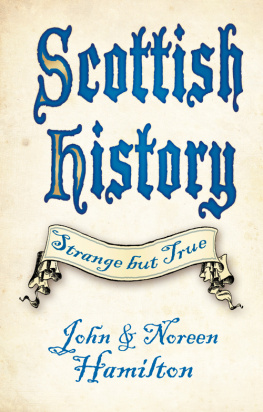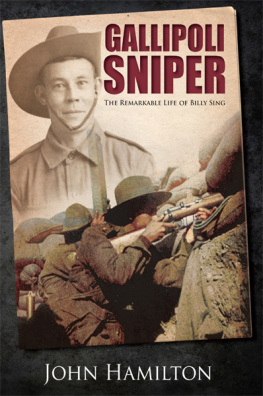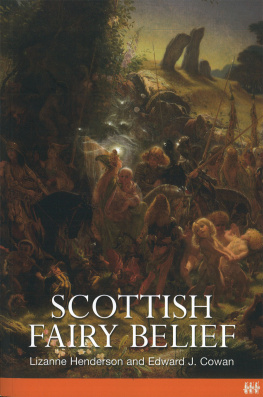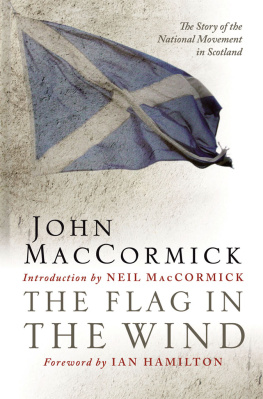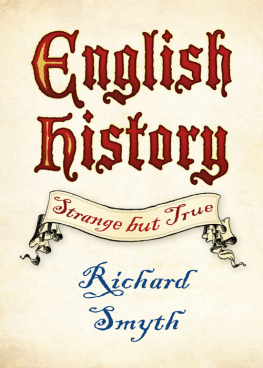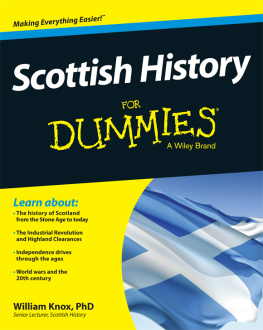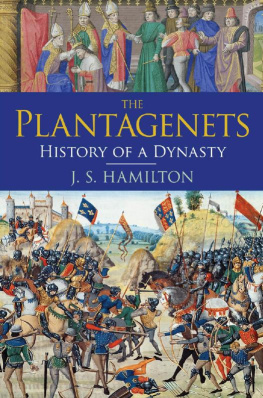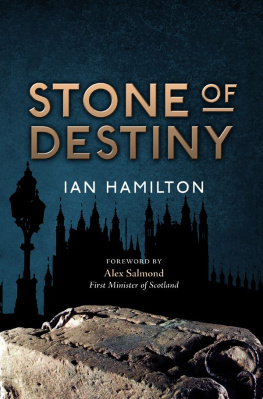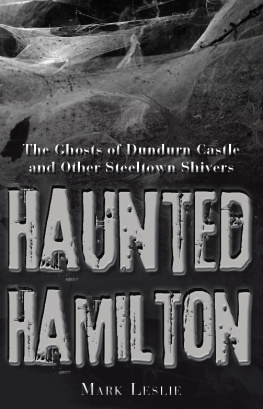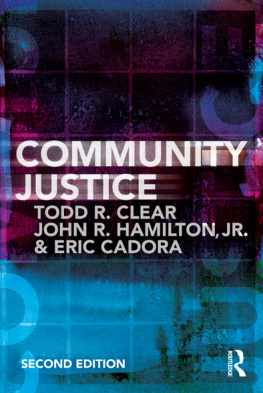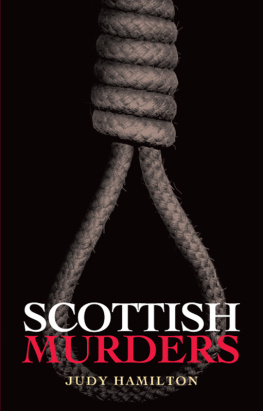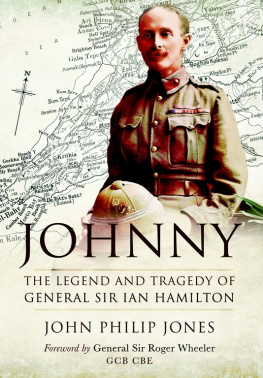Hamilton John - Scottish history strange but true
Here you can read online Hamilton John - Scottish history strange but true full text of the book (entire story) in english for free. Download pdf and epub, get meaning, cover and reviews about this ebook. City: Stroud, year: 2018;2016, publisher: The History Press, genre: Non-fiction. Description of the work, (preface) as well as reviews are available. Best literature library LitArk.com created for fans of good reading and offers a wide selection of genres:
Romance novel
Science fiction
Adventure
Detective
Science
History
Home and family
Prose
Art
Politics
Computer
Non-fiction
Religion
Business
Children
Humor
Choose a favorite category and find really read worthwhile books. Enjoy immersion in the world of imagination, feel the emotions of the characters or learn something new for yourself, make an fascinating discovery.
- Book:Scottish history strange but true
- Author:
- Publisher:The History Press
- Genre:
- Year:2018;2016
- City:Stroud
- Rating:4 / 5
- Favourites:Add to favourites
- Your mark:
- 80
- 1
- 2
- 3
- 4
- 5
Scottish history strange but true: summary, description and annotation
We offer to read an annotation, description, summary or preface (depends on what the author of the book "Scottish history strange but true" wrote himself). If you haven't found the necessary information about the book — write in the comments, we will try to find it.
Scottish history strange but true — read online for free the complete book (whole text) full work
Below is the text of the book, divided by pages. System saving the place of the last page read, allows you to conveniently read the book "Scottish history strange but true" online for free, without having to search again every time where you left off. Put a bookmark, and you can go to the page where you finished reading at any time.
Font size:
Interval:
Bookmark:

a Deep Feather Bed
The seventeenth century started with Union of the Crowns Scotland, England and Ireland were united under a single monarch. A chance for unity, peace and prosperity, perhaps? Unfortunately not! The century was to see the English Civil War spilling over into Scotland and Ireland, the beheading of a Stuart king, the deposing of another Stuart king and Williamite campaigns in Scotland and Ireland.
In 1603 James VI of Scotland became James I of England. His great-grandmother, Margaret Tudor, was Henry VIIIs oldest sister. It made him the closest candidate in the royal line. He ruled the three kingdoms (he was King of Ireland too) for twenty-two years. Opinions were mixed: David Hume wrote that many virtues ... it must be owned, he was possessed of, but no one of them pure, or free from the contagion of the neighbouring vices, whilst Henry IV of France called James the wisest fool in Christendom.
By and large he maintained peace, ending the long-running conflict with the Spanish, and kept taxes reasonable. Despite conspiracies against him, notably the Gunpowder Plot, he avoided large-scale executions of Catholics by his predecessor, Queen Elizabeth, and of Protestants by Queen Mary before her.
James left Edinburgh, promising to return every three years. He only managed to make it to Scotland once in twenty-two years. He claimed that he ruled Scotland with the stroke of a pen. Despite the huge sums spent by Elizabeth on war against the Spanish and the Irish, James enjoyed the comforts of London. He said he was swapping a stony couch for a deep feather bed.
By the way, there is considerable conjecture that he was not always alone in the feather bed. He had a succession of young men as favourites. Of one of these he said, You may be sure that I love the Earl of Buckingham more than anyone else. On the other hand he did describe sodomy as among those horrible crimes which ye are bound in conscience never to forgive. The case is not proven.
Despite the failure of the Isle of Lewis scheme, James pursued his idea of plantation as a way of calming troubled lands. The plantation of Ulster was his way of dealing with the most wild, unruly and most Gaelic part of Ireland, the north.
The Ulster Plantation came about through a number of different projects. One of them started almost by accident as a result of a struggle between the MacDonalds and the Campbells in Kintail.
The MacDonalds had lost land in Kintail to their ancient enemies the Campbells. The Campbells, seeking to ensure their hold on the land and to make a profit from it, imported numbers of Protestant Lowland Scots farmers from Renfrewshire and Ayrshire. When the MacDonalds took back the land they were burdened by this population of Lowlanders that they had no use for. How to get rid of them?
Kinsman Randal Arranach MacDonnell residing in Dunluce Castle in County Antrim in Northern Ireland said, Ill have them. So long as theyve got their own cows. So began the MacDonnell plantation of County Antrim in 1607 three years before King James IV and Is official plantation got underway.
The MacDonnells of Dunluce in Northern Ireland are often described as Scottish invaders, but they were no strangers. Their recent ancestry was very closely entwined with Ulster families.
To give the background: the MacDonalds of Islay, part of the great MacDonald Clan, came to take over the area of Ulster which today represents most of County Antrim. Islay, remember, is clearly visible from Ireland and vice versa, a short hop in a Highland Galley.
Their first claim to the area was through marriage, John Mor MacDonald (Big John) and Margaret Bisset, giving them title to the Glens area, but it was a couple of generations later before the MacDonalds made a substantial move. Sorley Boy MacDonnell became the occupier of Dunluce Castle and the master of a substantial territory. Sorley Boys granny was from Ulster, so was his great-granny and his great-great-granny and so on. In fact six out of seven of his immediate ancestors had married Ulster women. He was related to all the great families of the province: ONeills, OCahans, Bissets, Savages and ODonnells.
hands of a Scottish Catholic
While the project of the plantation of Ulster was supposed to have replaced the native population with Lowland Scottish and English Protestants, 300,000 acres remained in the hands of a Scottish Highland Roman Catholic.
Randal Arranach MacDonald had maintained his links across the North Channel. The name Arranach indicates that he grew up on the Isle of Arran following a custom of fostering out children to strengthen family ties. He had an entirely Highland upbringing.
During the Nine Years War he had started out against the forces of Queen Elizabeth, but had listened to the wind and at the opportune moment switched sides and declared himself a loyal English servant.
The end of that war coincided with the death of Elizabeth and the accession of James I; indeed, when Hugh ONeill, the Ulster commander, surrendered to a portrait of Queen Elizabeth nobody mentioned that she had been dead for three days.
James was looking for a different solution. He hated war. Not that he was a nice man, but war cost money, lots of it. Coming to London from his impoverished position in Scotland he found the coffers empty and property mortgaged all to finance war in Ireland.
His alternative solution for Ulster, the wildest and most Gaelic part of Ireland, was plantation. There were different schemes and exceptions, but largely land was taken from the Irish clans and given to English and Scottish gentlemen in portions of up to 3,000 acres. They were then expected to import tradesmen, famers and labourers to work that land and to build a new infrastructure.
The MacDonnell clan were sitting on most of County Antrim. His opposite number, chief of the OCahan clan, on the other side of the River Bann, was arrested and sent to the Tower of London where he spent over twenty years without a single charge being brought against him. He was simply got rid of.
Thanks to his Lowlanders from Kintail, Randal MacDonnell could claim that there was no need to take his land away as he was already planting it with the appropriate sort. He got away with it. His English neighbours repeatedly accused him of remaining a Catholic, harbouring priests. Each time the king, while noting that these were grievous offences, pardoned him. Some say that this was due to liaisons the two men had in Scotland in earlier years. The MacDonnells were the only Ulster clan to retain their lands and position. The family continue to be Earls of Antrim to this day.
Many in Ulster are intensely proud of their Scottish origins. Ulster Scots heritage is widely celebrated, but there is never a whisper about Ulster English!
MacDonnells plantation in Antrim was Scottish, as was the Hamilton and Montgomery (both of whom were from Ayrshire) plantation in County Down, however overall 40 per cent of the planters were from England. County Londonderry was planted from London, hence the name. It is our experience that many folk in Ulster will flatly refuse to contemplate that their ancestors were anything other than Scottish, despite having patently English surnames.
By the way, perhaps the greatest victory the Scots had over the English was the American War of Independence. Scots Presbyterians who had moved to Ulster felt discriminated against. Starting in 1714, they emigrated to North America. They became heavily involved in the creation of the United States. Eleven US presidents have Scottish ancestry by way of Ulster. Many Americans are proud of their Scotch-Irish heritage.
Next pageFont size:
Interval:
Bookmark:
Similar books «Scottish history strange but true»
Look at similar books to Scottish history strange but true. We have selected literature similar in name and meaning in the hope of providing readers with more options to find new, interesting, not yet read works.
Discussion, reviews of the book Scottish history strange but true and just readers' own opinions. Leave your comments, write what you think about the work, its meaning or the main characters. Specify what exactly you liked and what you didn't like, and why you think so.

